Media | Articles
From slot cars to the real thing, Jim Hall’s legendary Chaparrals never lose their magic

Sometimes I feel like I’m getting a little jaded when it comes to cars. Then I see something special that fans the embers of enthusiasm back into a flame. This past weekend at the inaugural American Speed Festival I got to see the original spark for those embers.
I’ve been covering major auto shows for almost two decades. For the past 10 years, partly due to my job as a writer, partly due to an interest in 3D photography, and partly because I like cars, I’ve also been going to all sorts of car shows, car events, and museums and shot tens of thousands of photographs and hours and hours of video. You end up seeing a lot of significant vehicles, and you get to know some of the people who own them. When you see a one-off special at a concours, you notice who owns it and you say to yourself, “I guess Myron Vernis sold it,” that means you’ve been around the special interest automotive block a time or two.
My older brother, Jeffrey, lives in Israel, where he services industrial machinery. He recently sent me a photo of a car and asked me if I knew what it was. I immediately texted back, “That’s a Kaiser Darrin. Fiberglass body and sliding ‘pocket’ doors. Designed by Howard ‘Dutch’ Darrin, a well-known car designer who did a lot of custom Packards.” He responded, somewhat amazed by his little brother, “How do you know this stuff?” I replied, “How do you know what a Cincinatti-Milacron CNC machine is? It’s my job to know cars.” To be honest, though, it’s not just my job, but probably as with you, it’s also a lifelong interest.
It’s not entirely clear in my mind just when I first started to be interested in automobiles. I remember the mid-1950s Oldsmobile that my father drove and the excitement in the family when he and my mom took us to Packer Pontiac in Detroit to take delivery of a blue 1961 Pontiac Catalina, which I believe was the first brand-new car that they bought. Most likely, if a single thing sparked my interest in cars it was probably a small 1:32-scale figure-eight slot car set that my parents got me for either a birthday or Chanukah when I was about 10 years old. In the early 1960s, we didn’t have video games and sophisticated R/C cars, but we did have some pretty cool toys. Model trains and erector sets were popular. So were chemistry sets with chemicals that today’s nannies would not permit. Jeff and I had all of those. He had a Marx train set that was compatible with Lionel stuff and our parents added additional track, a station, and other accessories, like a Lionel track checking station wagon that today would be worth hundreds of dollars just by itself. Jeff and I would run track all around the living room, under the couch, and sometimes even into the dining room.
The slot car set didn’t take up as much space as our train layouts, and I could set it up on the dining room table. While the figure eight wasn’t as sophisticated as the layouts neighborhood kids made with their tiny 1:82 scale Auroras, I thought the larger 1:32 cars were more realistic and had better detailing. I used that set so much that the box deteriorated to the point where I started storing the set in a suitcase.
Marketplace
Buy and sell classics with confidence
I don’t recall asking my parents for a larger track, but they knew that I really liked slot cars. Sometimes Jeff and I and our friends would ride our bikes a few miles to a slot car raceway on Woodward Avenue. While few of those still operate across the United States, during the slot car boom of 1966–68 even small towns had hobby shops with multilane slot tracks. Big cities had raceways with multiple tracks. I do recall our parents not being pleased with the money we spent on the per-lap fees and pinball machines.
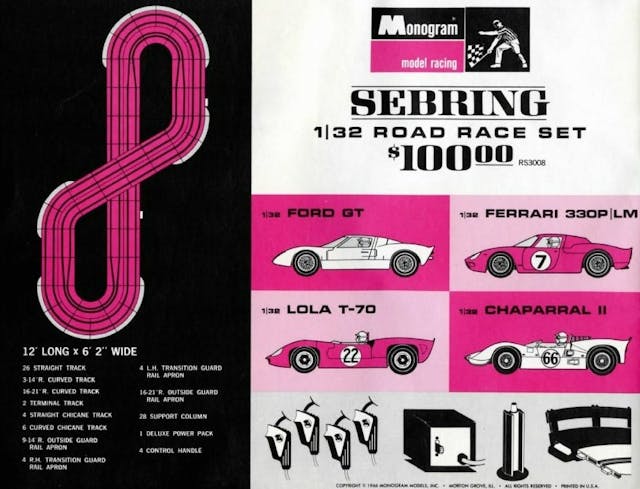
On the occasion of my Bar Mitzvah celebration, my parents gave me Monogram’s best slot car set, named Sebring after the famous airfield-based race course in Florida. It had a retail price of $100 in 1967, which works out to over $800 in 2021 currency, but my dad had a friend who worked for a wholesale toy distributor and he got it wholesale. Still, even at wholesale it was a very generous gift. My dad was a veterinarian, but our parents weren’t wealthy, and when I look back at some of the gifts they gave us and the food my mom fed us (lamb chops weren’t regular fare in your house?) I realize just how generous they were to their kids.
It wasn’t just an expensive slot car set, it was a special set. While the vast majority of home slot car sets had two-lane tracks, Monogram had designed their tracks to snap together side by side as well as longitudinally, and they made two different radius turns that could also nest side by side, so the Sebring set can make a 25-foot long, four-lane course. Instead of two kids racing and the others waiting for their turns, I could race with three friends at the same time. The corners even had aprons, allowing for some drifting. Most importantly, it came with four sports car racers from the period, a red Ferrari 330, a Ford GT40 Mk I with the original flat nose, a metallic blue Lola T70, and a Chaparral 2. The fact that the course took up a 12×6-foot space apparently didn’t bother my folks, who were used to the model train tracks. Of course, the track needed to be disassembled when play ended.
For some reason I gravitated to the Lola and Chaparral, particularly the Chaparral. I’m not the only person who thinks Lola and Chaparral are two of the most beautiful racing machines ever made. The Lola T70 may be even prettier than the Chaparral, but I became a fan of Jim Hall, most likely because the Chaparral was American and I started following his team and road racing in general. That led to an interest in cars that handle and go around a curve quickly, which is how I ended up owning a full-scale Lotus Elan, and eventually writing what you are reading now.
Jim Hall, who made the Chaparral racers, was a pioneer in so many ways. He’s probably best known for the high-winged Chaparral 2E and 2F, though the earlier 2 has some aero tricks itself. Hall’s 2J vacuum car paved the way for ground effects vehicles and was so revolutionary that it was banned before it could even race. The 2 was based on a fiberglass composite monocoque that almost 60 years later is still up to the rigors of track use. The Chaparrals wore cast aluminum wheels with a spoked pattern that’s been copied by BBS and many other wheel makers. While he regrets not securing the intellectual property on the design of those wheels, Hall was one of the first team owners to understand the business importance of licensing to and sponsorship from consumer products companies.
That’s how I ended up with a Chaparral slot car. Hall made deals with Monogram and perhaps more importantly, Cox, which made gas-powered tether cars and model airplanes. The Chaparrals wore a small Cox decal on their sides, and Cox sold thousands and thousands of 1:20 scale Chaparrals with real engines (albeit with 0.04997 cubic inches, 0.8189 cc, displacement), as well as 1:24 and 1:25 scale slot cars. My brother had a Cox Chaparral tether car. We’d sometimes go over to a nearby shopping center, where we’d pound a nail for the tether into the asphalt in the alley behind the stores. My best friend Stevie also had an .049 powered Chaparral, but he lived in a more affluent neighborhood where there were fewer places we could run a tether car.
The Chaparral 2 and 2E were built to compete in the Can-Am racing series, where the Lola T70 also ran. As a young teenager I would have liked to watch them race in person, but I was too young to travel to a race by myself and my dad was a football fan, not a racing enthusiast. The closest the first iteration of the Can-Am series came to Detroit was in 1969, when it ran at Michigan International Speedway, which originally had a road course in addition to the oval that IndyCar and NASCAR have used. By then, though, the Chaparral’s Can-Am careers had come to an end, as Jim Hall was running McLarens that year.
Over the years I followed Hall and his racing team. In addition to their success in Can-Am (the Chaparral 2 won more than half of the races it entered), and campaigning the big-block Chevy-powered 2F coupe in international endurance racing, in 1979 Hall’s Chaparral racing team constructed the Chaparral 2K Indy car, nicknamed the Yellow Submarine for its Pennzoil livery. Johnny Rutherford drove it to his third victory in the 500-mile race the following year. The 2K was the first Indy racer to be designed from the ground up with undercar ground effects for downforce.
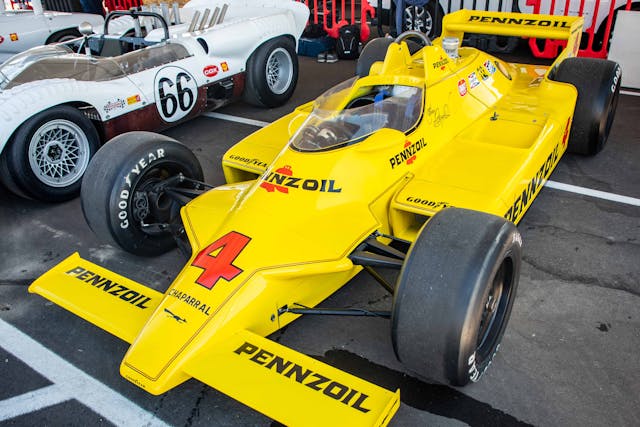
In the 1990s, I got a copy of Doug Nye’s book Chaparral, which also covers the 2F endurance racing coupe, the controversial low-drag 2H and the even more controversial 2J. That prompted me to do something that I’ve never done ever before in my life: I wrote someone a fan letter. Jim Hall graciously sent me back a signed photo of himself sitting amidst all of his Chaparrals.
Those cars were on display in a petroleum museum in Midland, Texas—Hall followed his father into the oil business, providing the financial basis for the Chaparral team and the race shop at its private Rattlesnake Raceway near Midland. I resigned myself to the fact that the only way I’d ever see my favorite race cars was if I made it to west Texas. I certainly never expected to see any of them at speed on a track.
Then the M1 Concourse facility in Pontiac, Michigan, just north of Detroit, announced that it was going to hold the inaugural American Speed Festival, a U.S. event taking inspiration from the U.K.’s Goodwood Festival of Speed, and bring scores of historic race cars to what has been described as “a country club for car lovers.” The 87-acre site includes 250 two-story car condo garages, each with space for a few cars downstairs and something akin to a customized stadium luxury suite upstairs, along with a 1.5-mile, 11-turn track that the facility calls a “performance” driving (not racing) track. When I saw that the American Speed Festival was going to be honoring Jim Hall with its new Master of Motorsports award and that he was bringing along four of his Chaparrals, I made sure to attend. I also made sure that the batteries for my cameras were charged, and I stashed my Chaparral slot car in my camera bag in hopes of getting it autographed.
Unfortunately, due to concerns about the pandemic, Hall, who is 86 years old, decided to accept his award virtually. Fortunately, he sent his son, grandson, and the Chaparral 2 and 2E Can-Am cars, the 2F international endurance racing coupe, and Johnny Rutherford’s Indy 500 winning Chaparral 2K.
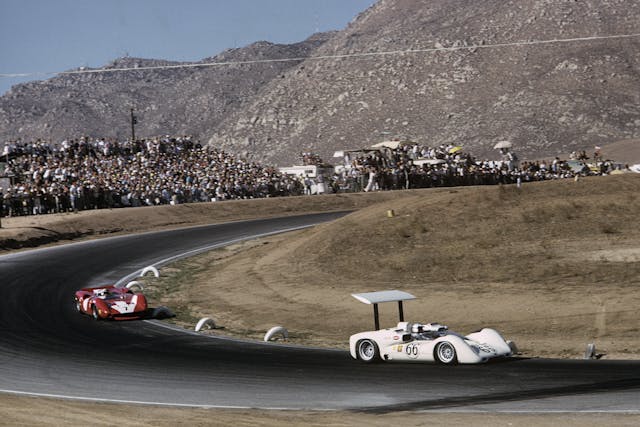
As I walked into the M1 Concourse facility, I passed through a couple of auxiliary paddocks. An ex-Parnelli Jones Lola T70, in the same metallic blue as my slot car, was sitting under a canopy. Not far away there was a 917/30, one of just six of the 1500-horsepower monsters built. Nearby there was Tipo 61 “Birdcage” Maserati, the first that I’ve seen in person. (To be honest, it’s not as pretty in real life as in photos.) Any one of those cars could be the center of attention at a major car show.
Then, over in the main paddock, I spotted three familiar-looking white sports cars sitting next to a yellow open-wheel racer and hustled over to the big tent. While getting my 3D rig together, I mentioned to one of the Chaparral team members that I still had my Chaparral slot car and showed it to him. He took it to examine it and then, without being asked, said, “Let’s take a picture of it,” walked over to the Chaparral 2 on which it was modeled, and set it down on the windshield’s clear acrylic air duct used to cool drivers (photo at the top of this story).
Not only did I get a chance to see my favorite race cars of all time, the encounter was up close and personal. I’d never get as close to them in a museum. Hall’s crew was most gracious, taking time to answer questions. No kid in a candy store ever had a bigger grin, but come to think of it, everyone on the Chaparral crew was smiling too. Apparently, this was the first time in years that the 2, 2E, and 2F would be on the track together. Hall’s grandson was standing by the 2E, and I asked him what it like to drive. He said he didn’t know, that this would be the first time that he drove that particular Chaparral, and from the look on his face he didn’t have to say that he was looking forward to it.
After shooting a bunch of photos of the Chaparrals, I went to photograph some of the other race and high-performance cars in the paddock but was sure to be back by the Chaparrals when it was their turn on the track. I love the sound of V-8 engines in the morning—or, in this case, noontime. The two small-block Chevy engines in the 2 and 2E fired up, then the big-block in the 2F was started, and the three white Chaparrals trundled off towards pit lane.
The crowd of spectators wasn’t very large, as the organizers had focused on getting the best cars they could rather than drawing the largest crowds for the inaugural event, but just about every spectator on site took a viewing position for the once-in-a-lifetime prospect of seeing Chaparrals at speed on a track.
I wasn’t the only kid with a Chaparral of my own.

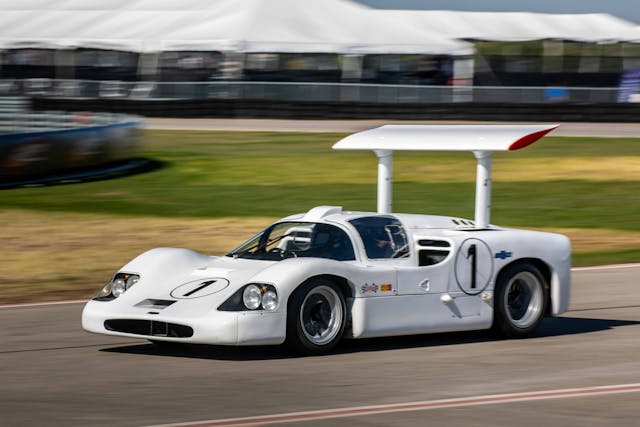

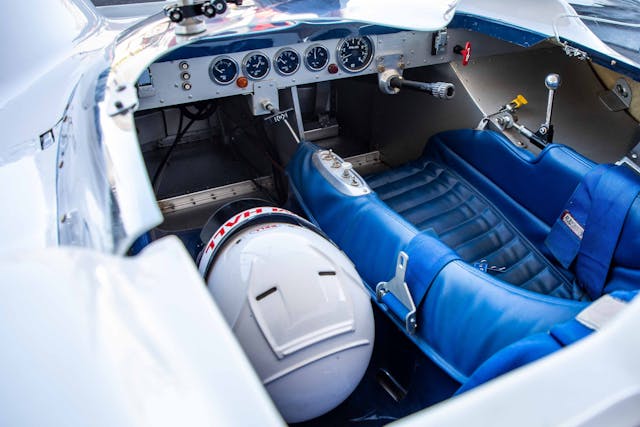
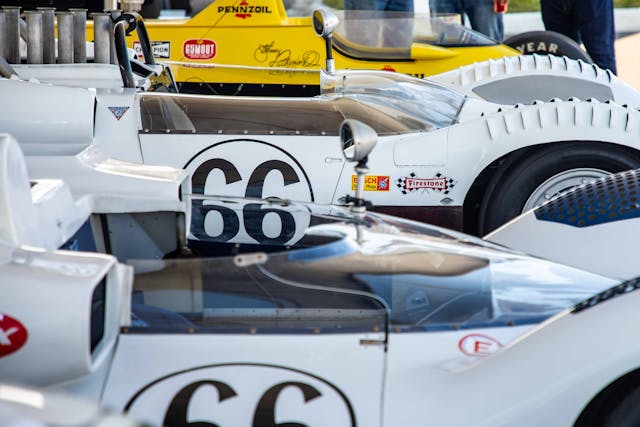

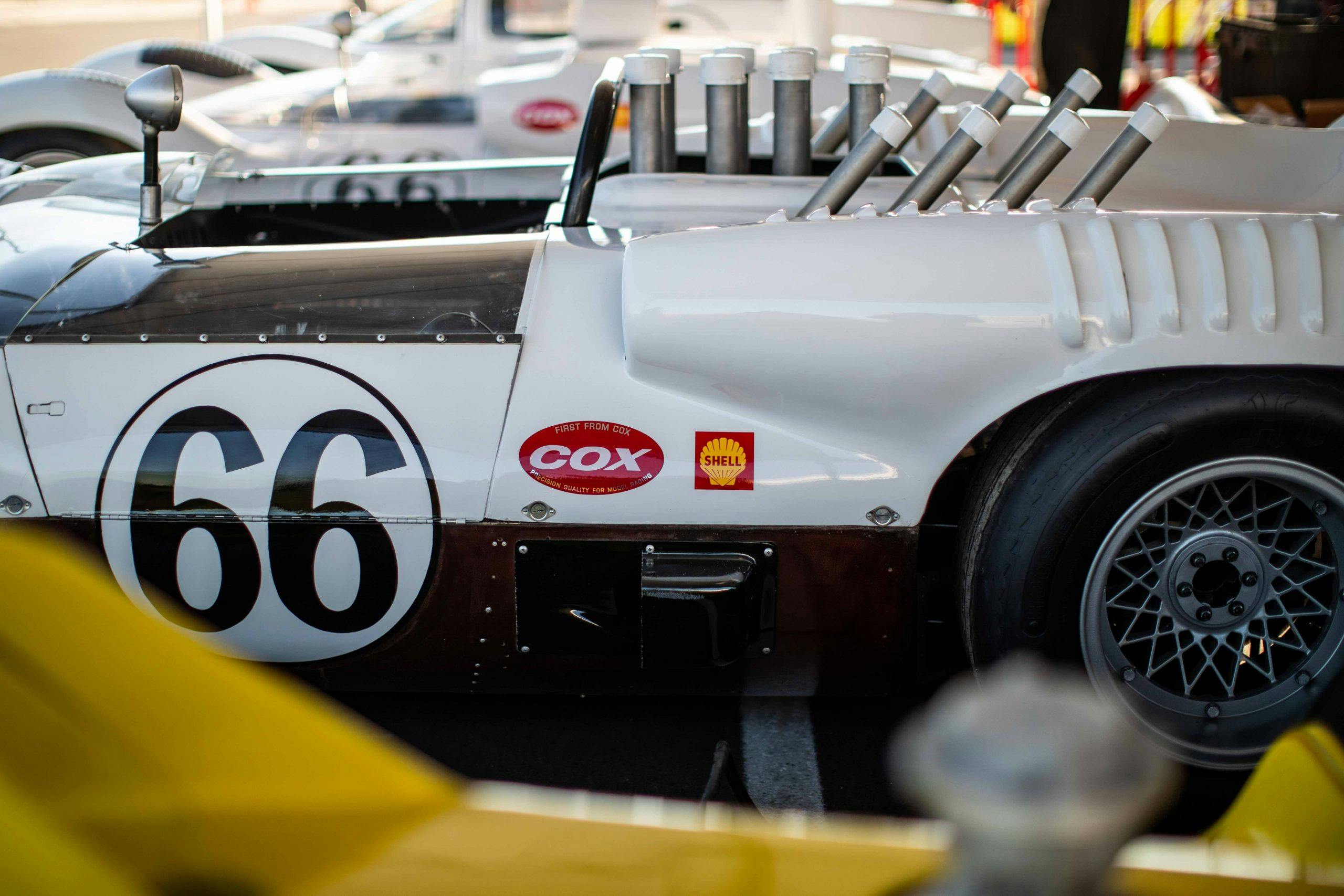
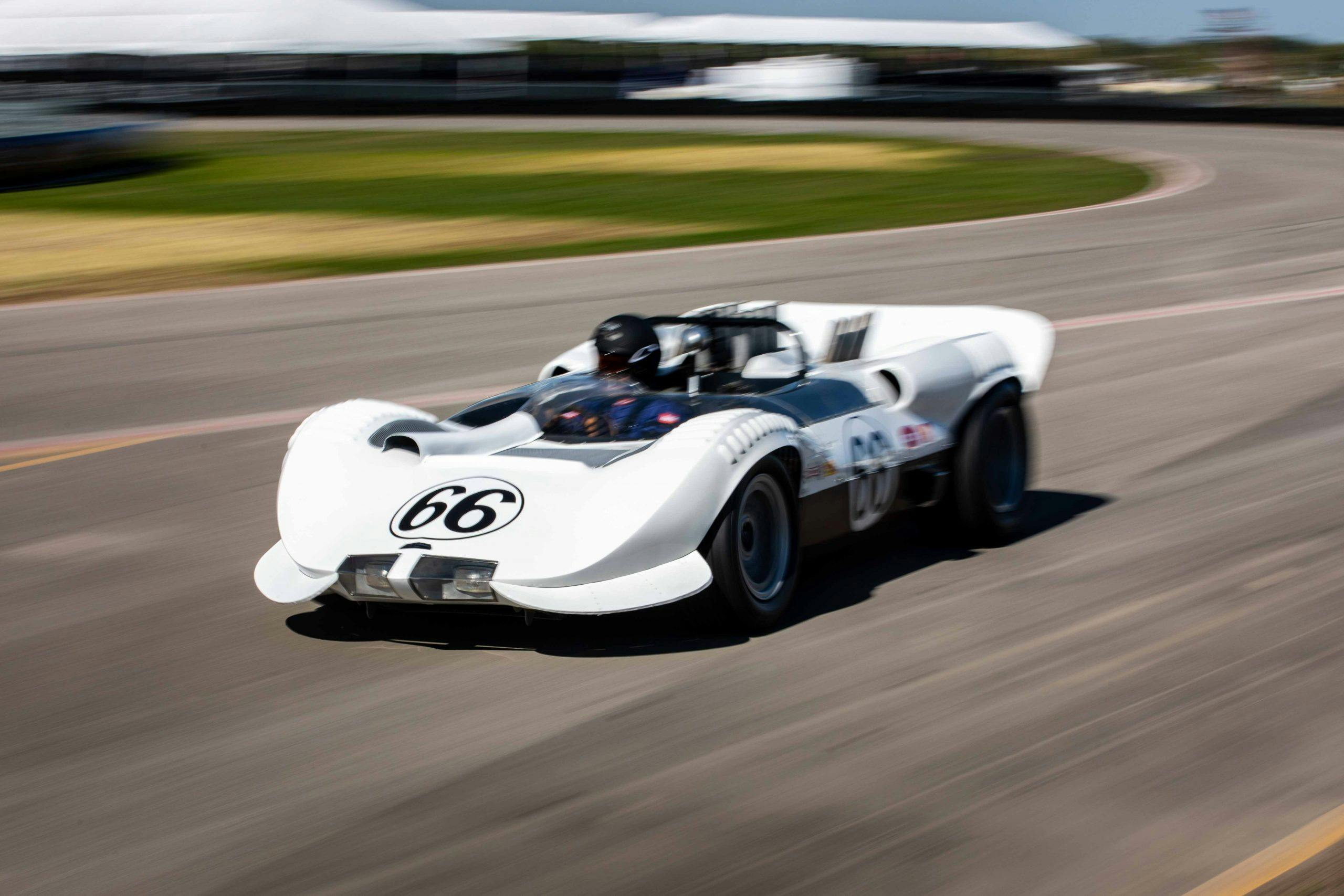
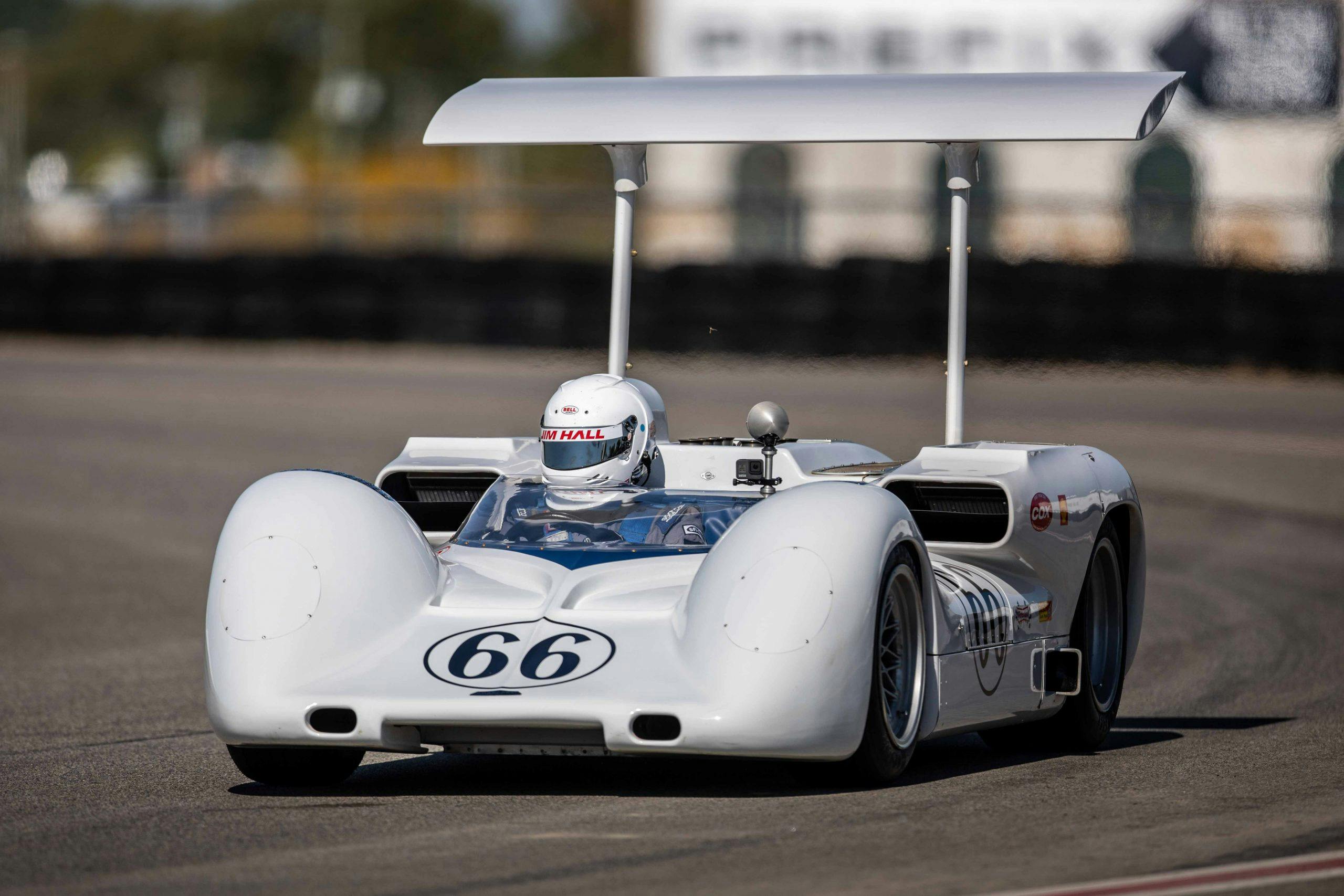
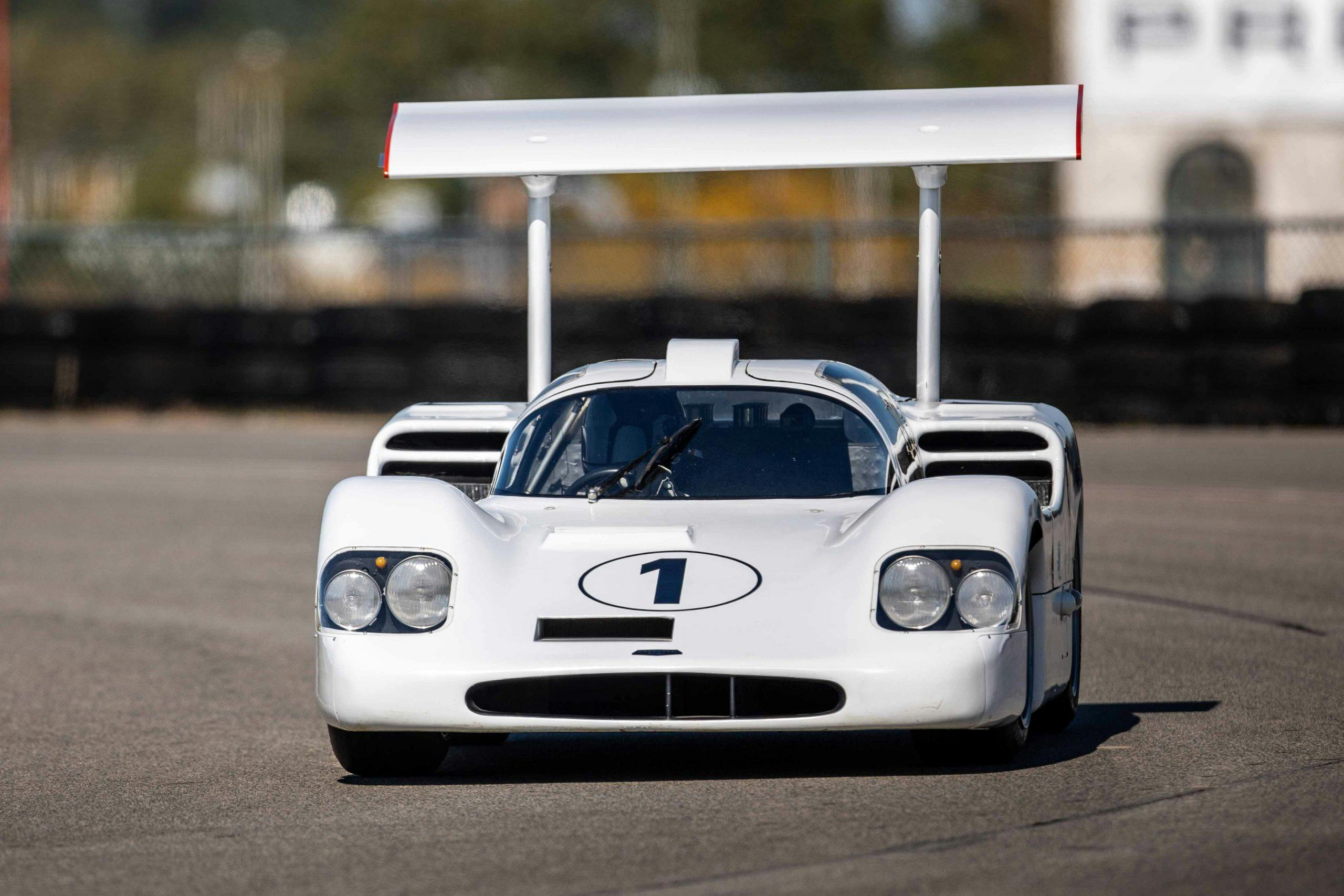
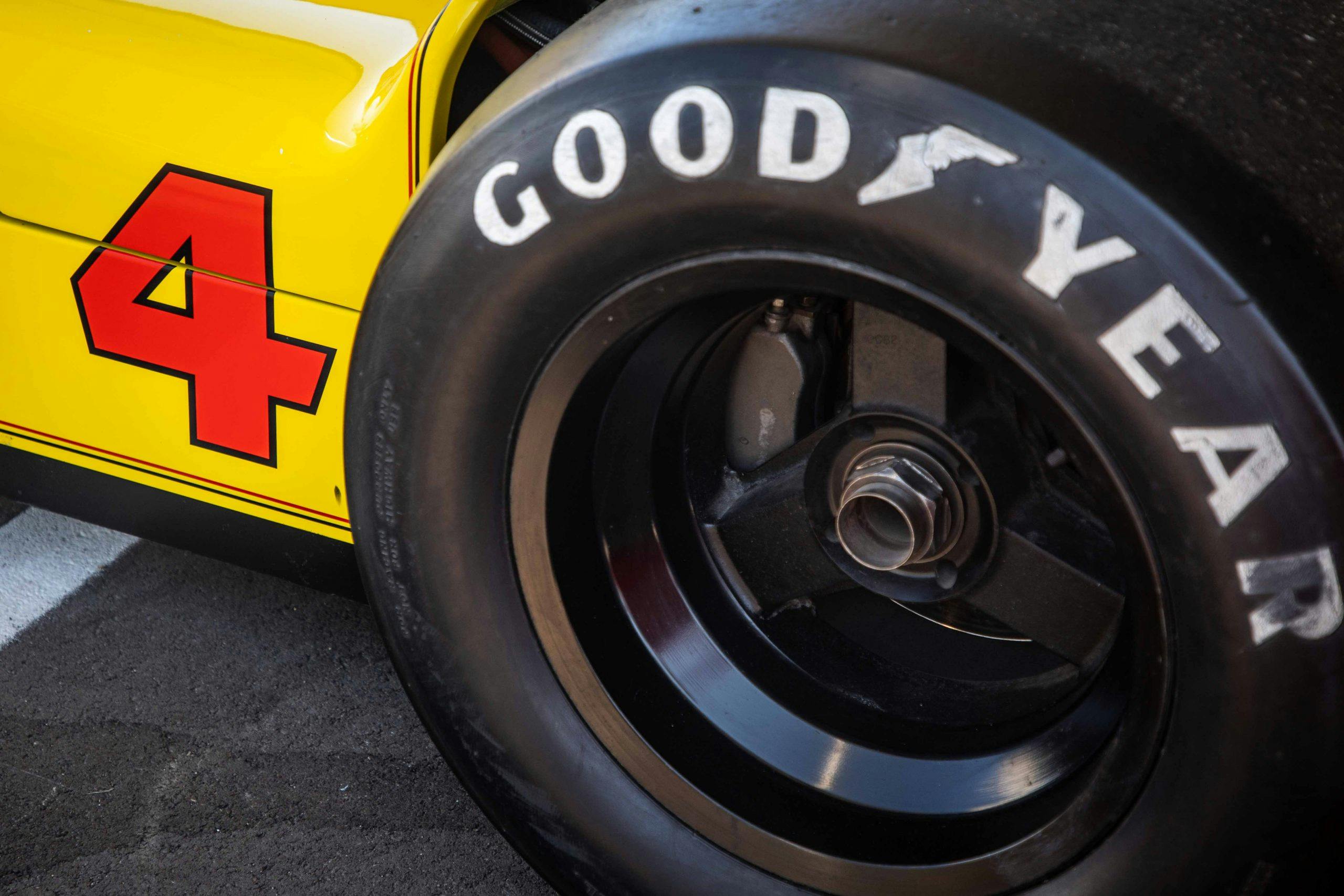
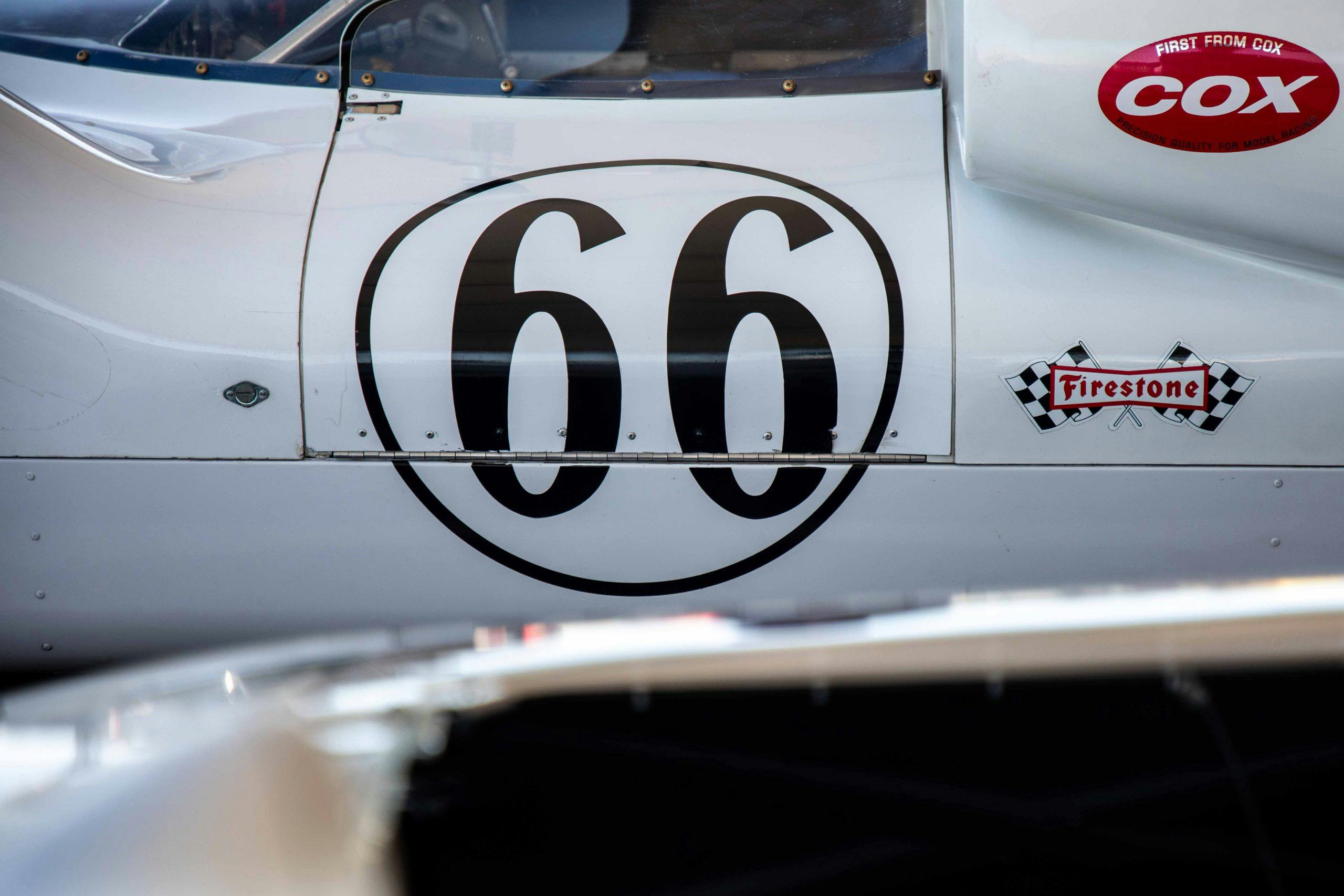
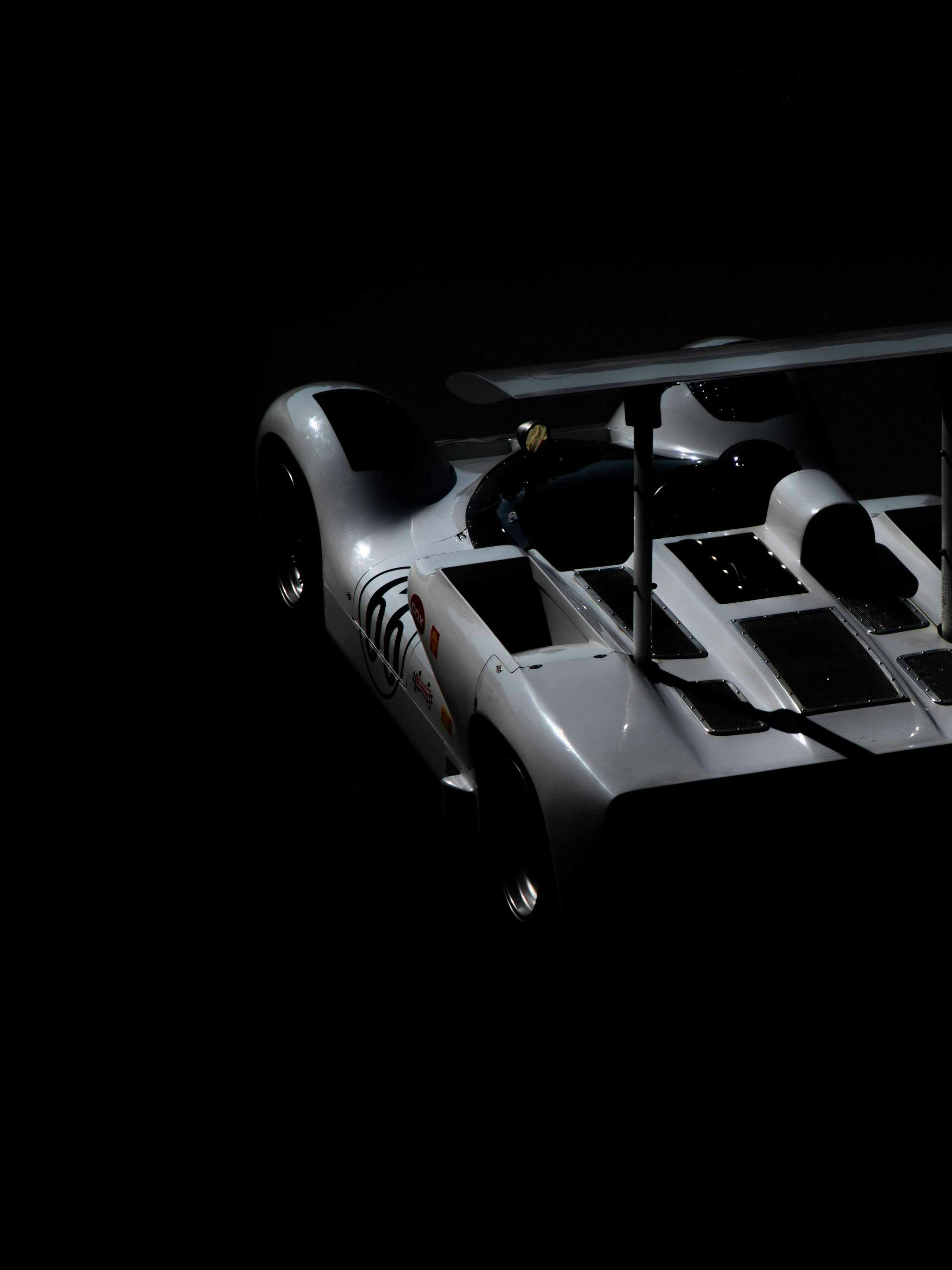
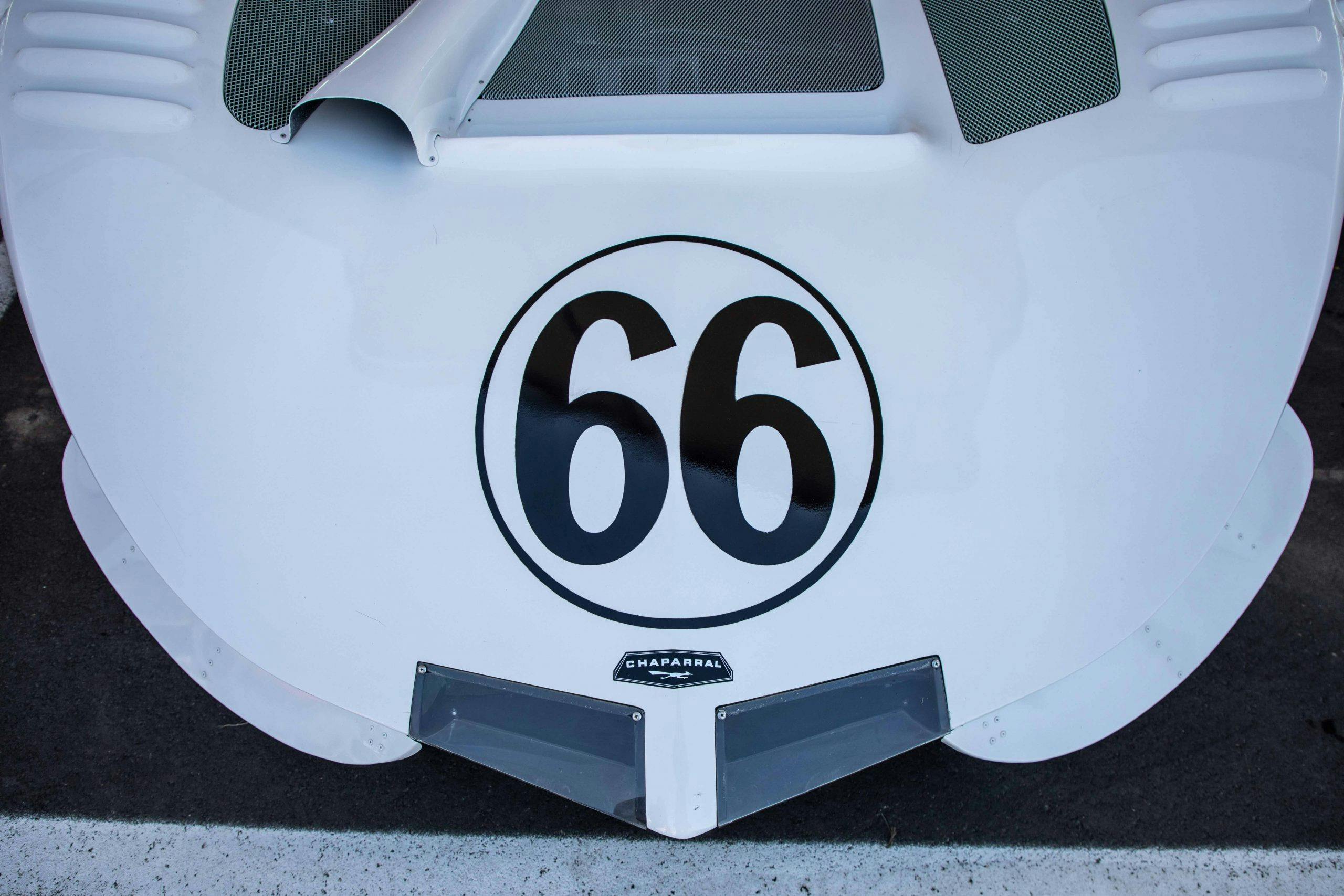

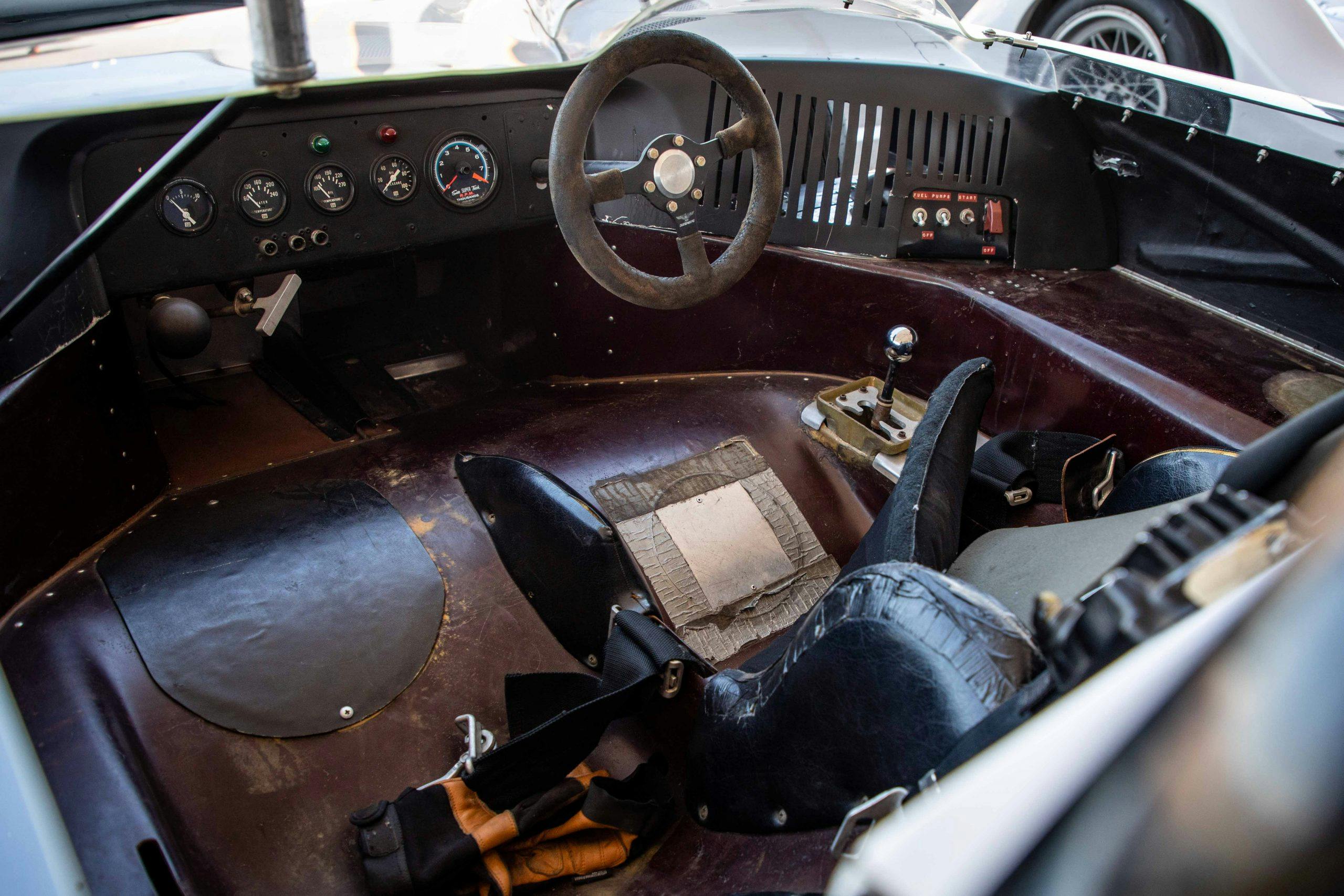
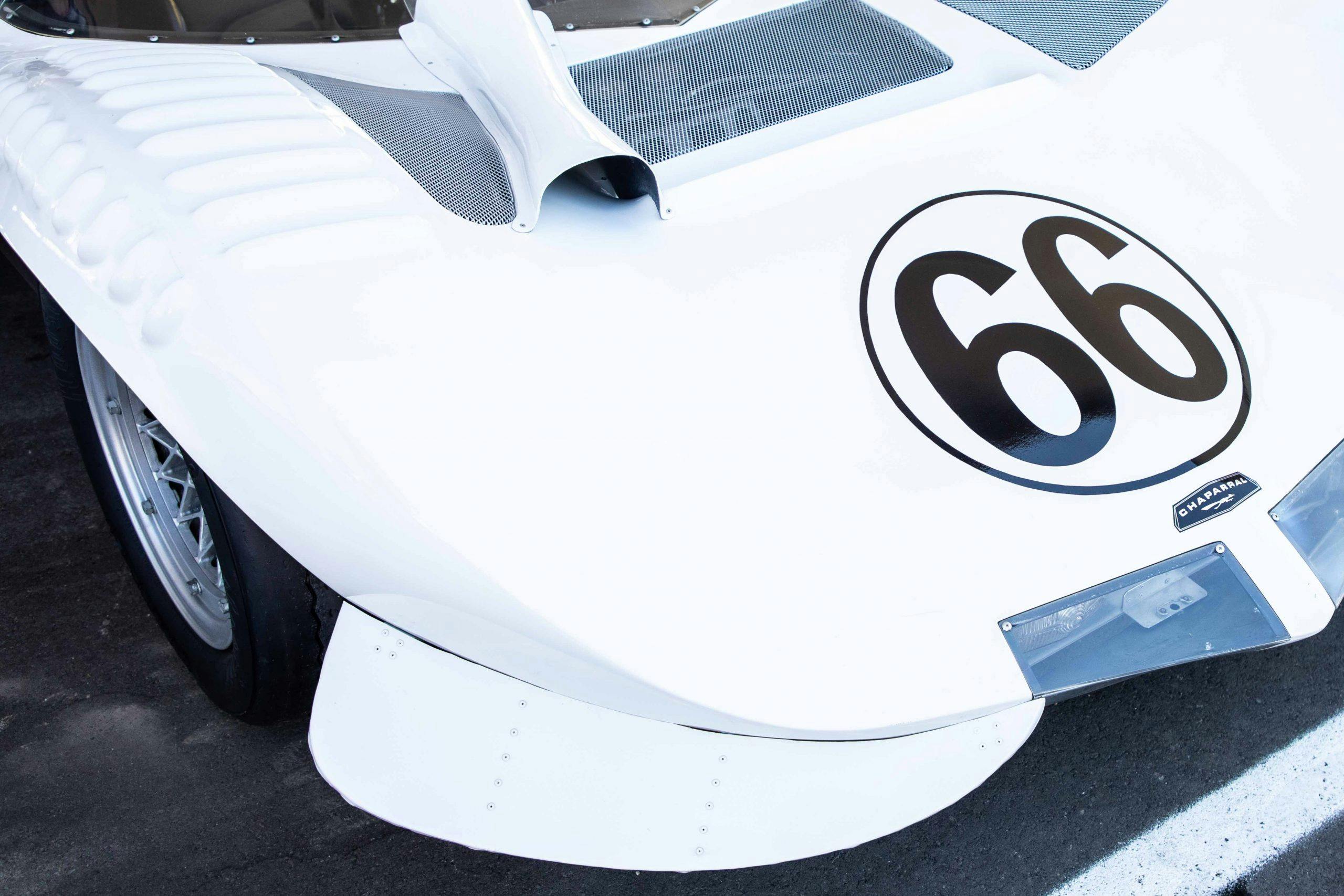
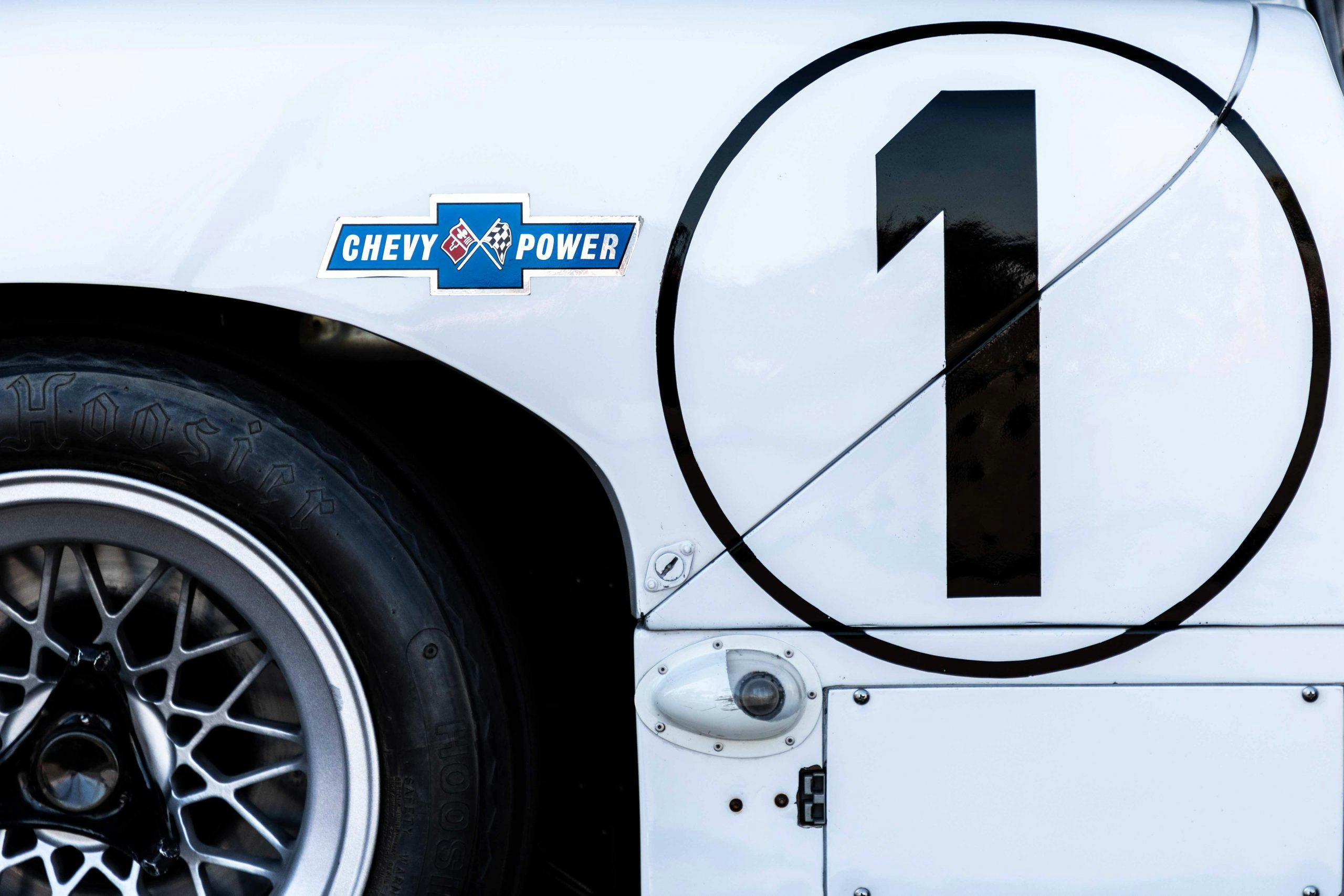
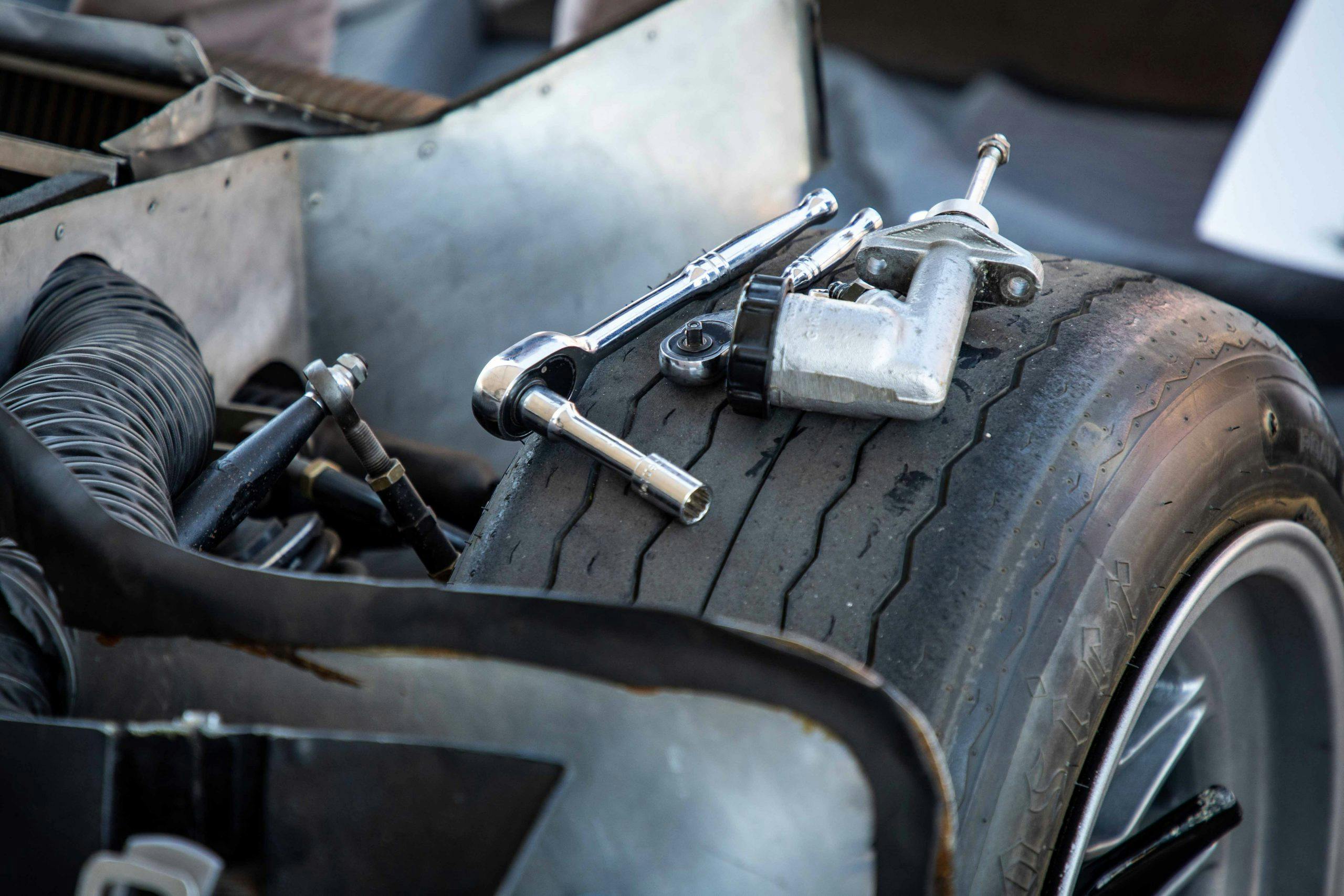
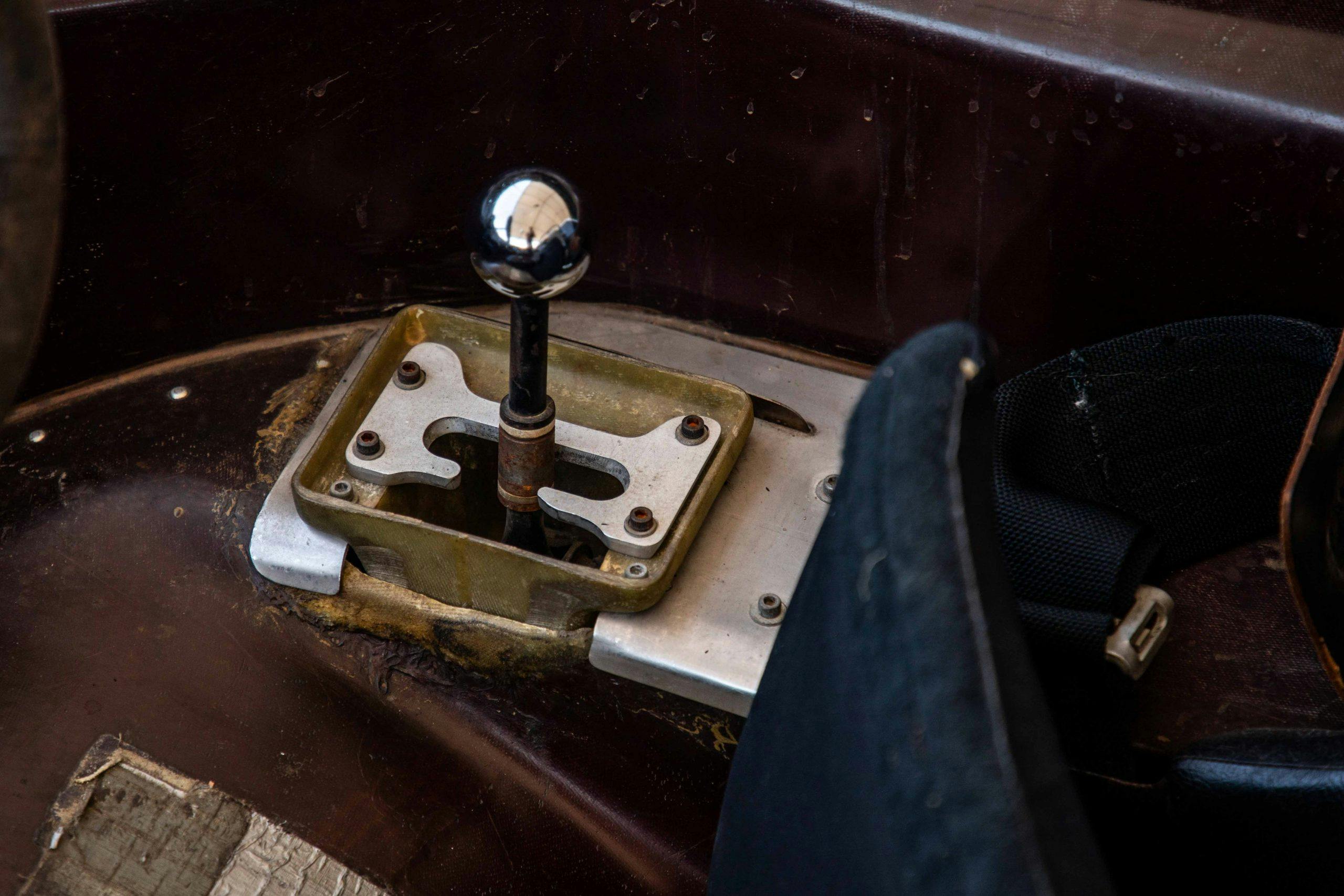
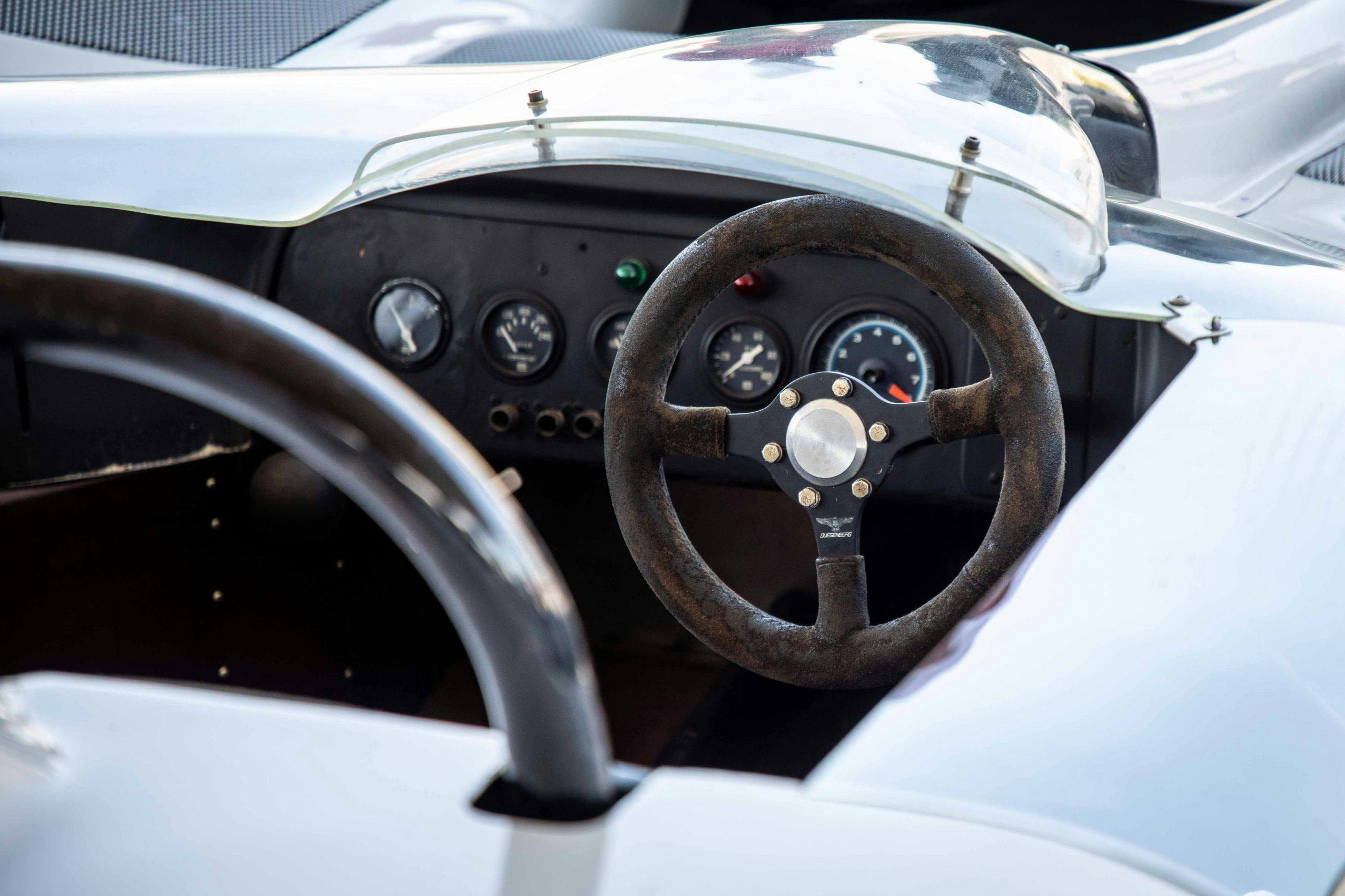
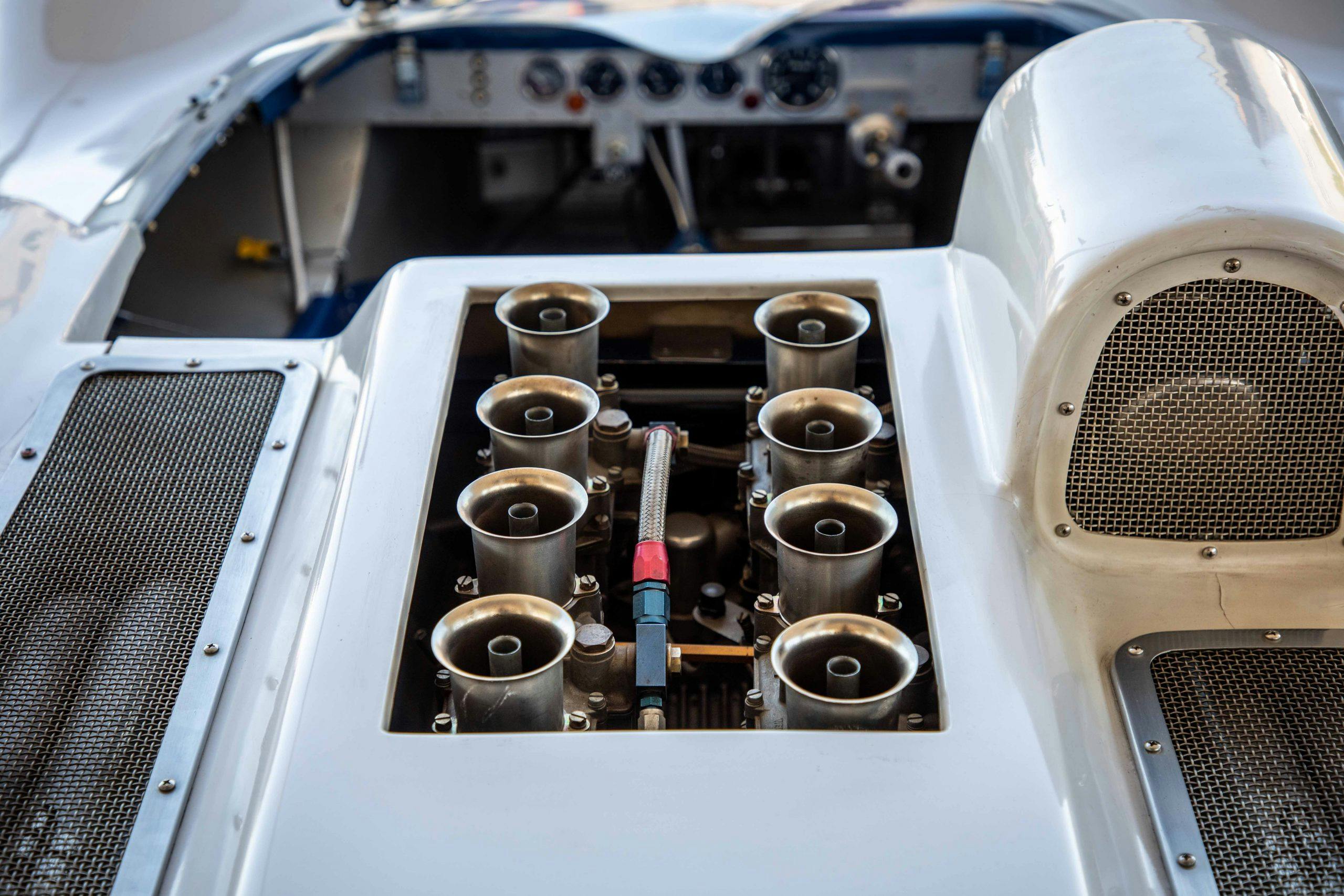
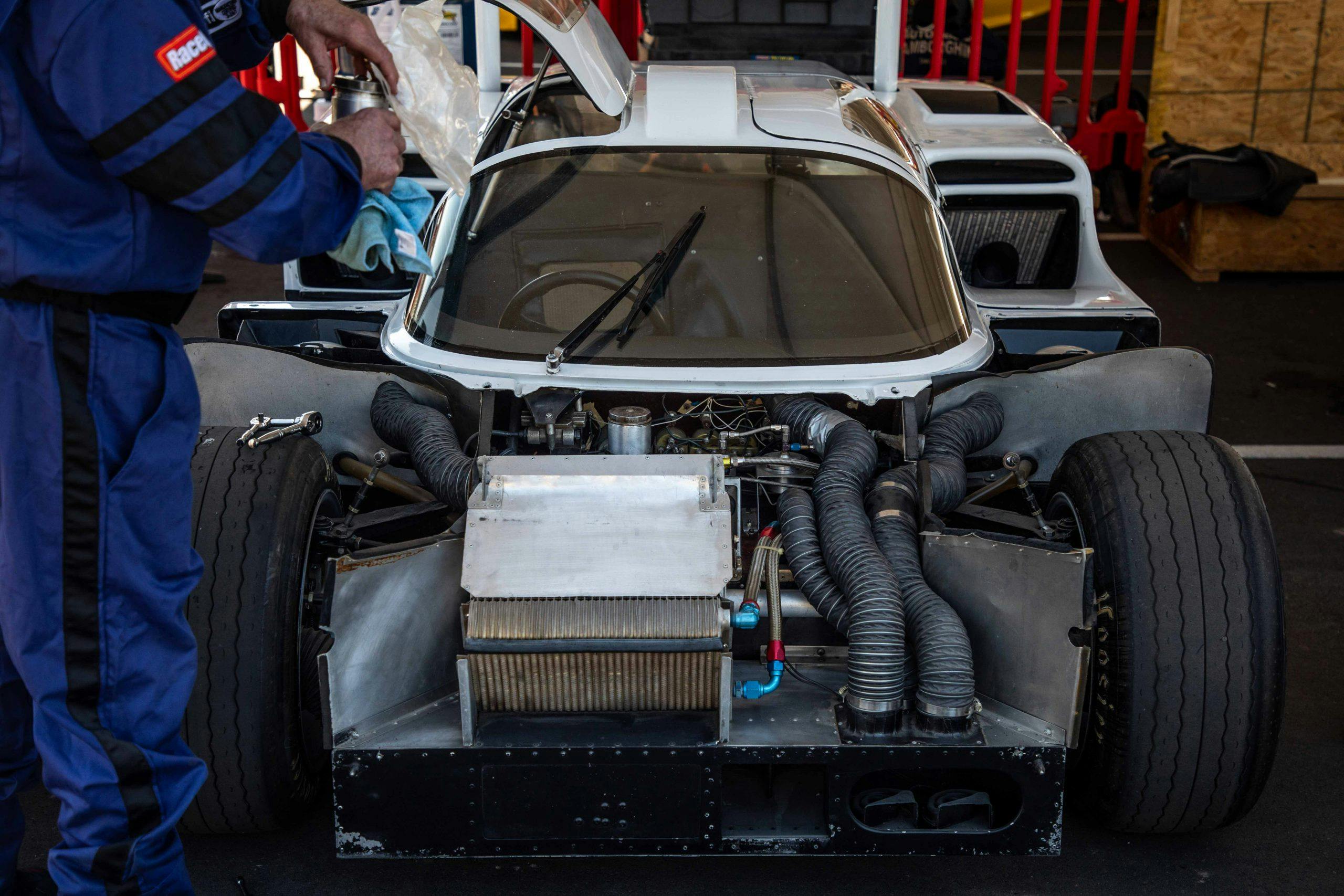
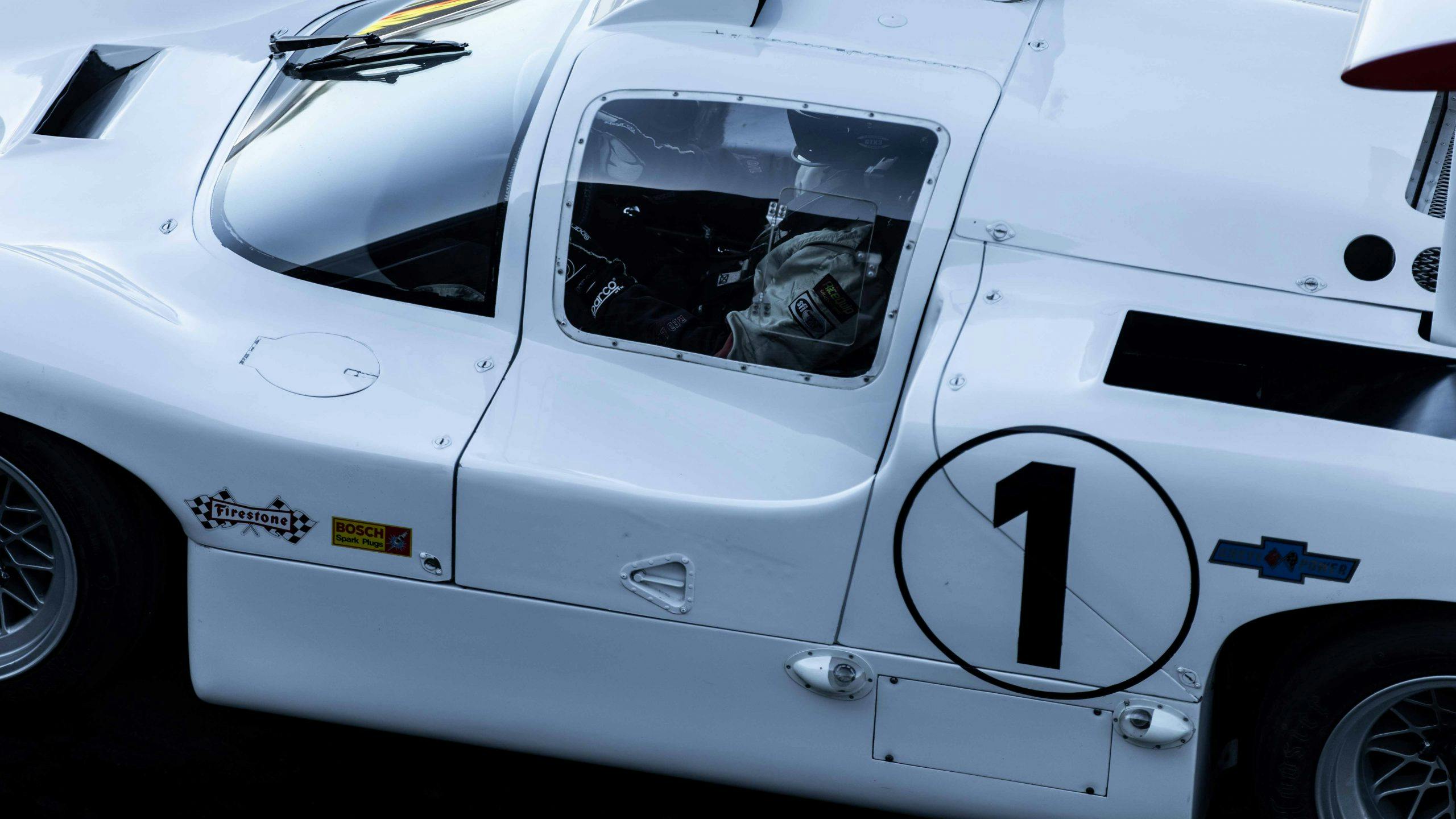
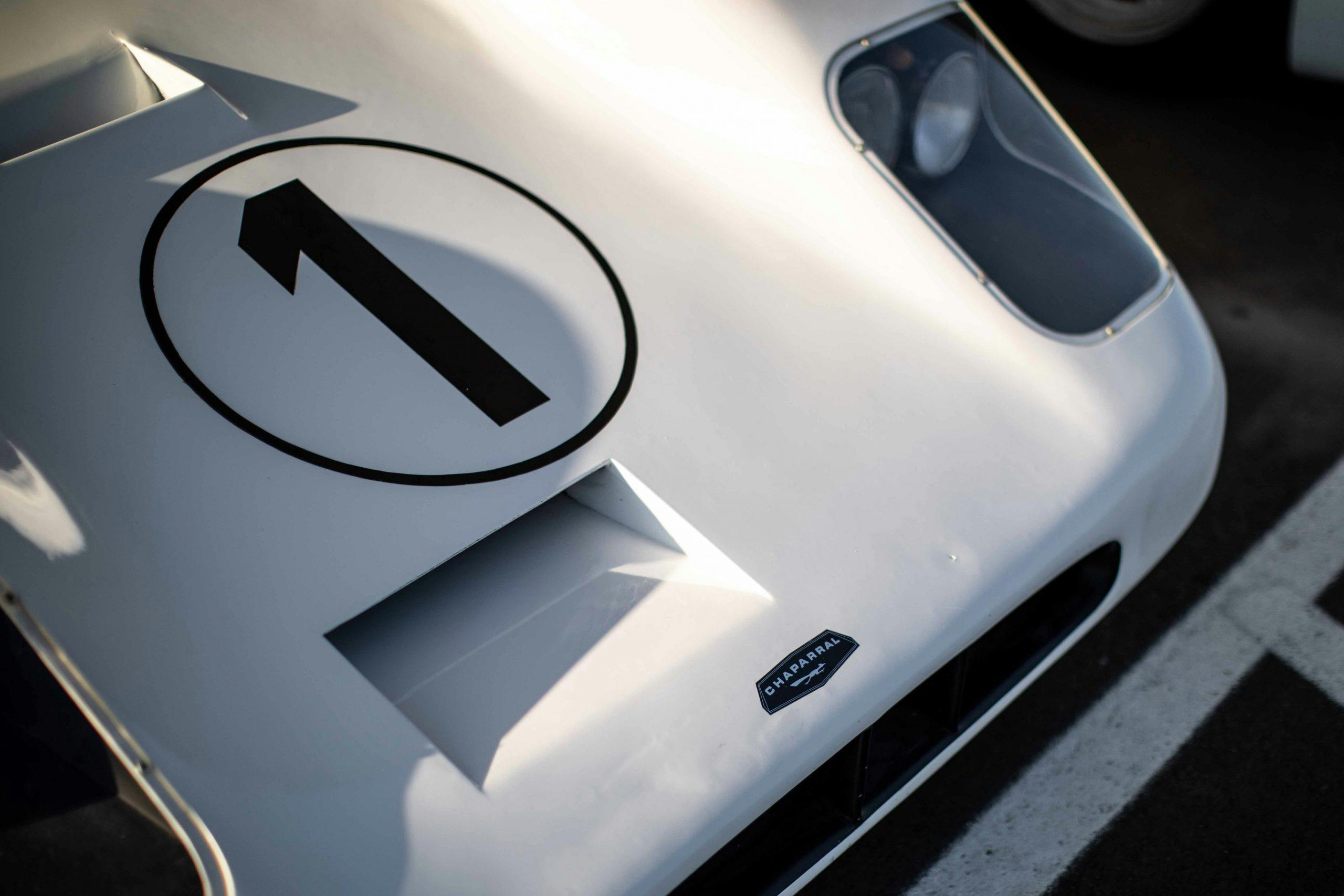





























IS JIM HALL STILL ALIVE? I FIND HIS CREATIONS THE MOST BEAUTIFUL AND TECHNICALLY ADVANCED RACE CAR DESIGNS IN RACE CAR HISTORY. HE IS THE PELE, THE ARYTON SENNA, THE MICHAEL JORDAN OF RACE CAR DESIGN AND ACTUAL RACING. A HIGH HONOR GOES OUT TO IS CO-DRIVER DURING THAT TIME OF RACING GREATNESS LATE 1960’S CAN AM. WOW WHAT A TIME THAT WAS.
Good article. But the 2J was not “banned before it even raced.” It competed in 4 1970 CanAms – Watkins Glen, Road Atlanta, Laguna Seca, & Riverside. It was effectively banned following the 1970 season…. 🙂
If you can’t beat ’em, ban ’em.
When I was in the 5th grade there was only one thing I wanted for my birthday & christmas put together. My dad took me down to J.C. Pennys and I came home with a Jim Hall Chaparral slot car. probably one of the biggest loves of my life. I would race every wensday night at the locale siot car track. I naver lost a race with that car. Wow, looking back,that was so much fun. thank you Jim Hall & thank you chaparral greatest racecar ever.
No idea how many hours were spent daydreaming and drawing Chaparrals in my youth. I got to see them at Watkin’s Glen in the crazy days of Can-Am and watching them from the hairpin is still etched in my mind. Thanks, Hagerty, for this great article.